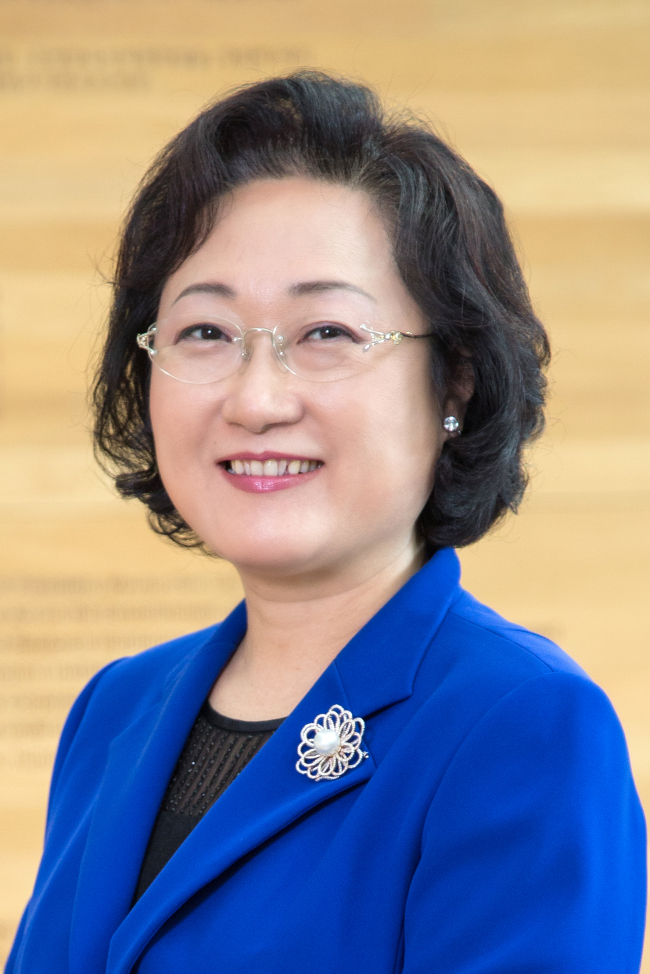For the past two years, the Korean female employment rate has been increasing continuously as a result of pan-government efforts aimed at providing a variety of employment measures that target women.
However, it is still relatively more difficult to create employment for women, and the effects that women actually feel or benefit from the policies seem to be low.
In Korea, non-regular workers account for 40.3 percent of female wage earners. This stems from the fact that most of the female workers work at establishments with the inability to provide full-time regular positions -- small establishments with less than 10 workers or the hospitality service industry.
Furthermore, Korea’s social conditions make it hard for women to have work-life balance, contributing the most to this phenomenon.
Even though 50 percent of women are participating in the labor market, housework is still considered women’s burden.
There is a saying among women in Korea: “After work, I go back to work at home.”
This saying shows how the burden is only confined to women, and under such circumstances, work-life balance seems a far-fetched idea.
Under the same context, men’s low participation in child-rearing in Korean family culture is another underlying cause of the problem.
According to Statistics Korea, the amount of time women spent on housework is 5.6 times higher than the time spent by men in dual-income families. This is in line with recent polls that showed the greatest obstacles to women’s employment are the “burden of child rearing (47.5 percent)”and “social practices and prejudices against women.”
Moreover, Korea has the highest working hours among the member countries of the Organization for Economic Cooperation and Development.
The culture of long working hours results in difficulties in improving both gender’s work-family life balance, child rearing and quality of life. In addition, inflexible organizational culture brings disadvantages to women’s evaluation and promotion during women’s pregnancy, childbirth and child-rearing.
 |
Lee Myung-sun (The Korean Women’s Development Institute) |
Such factors discourage women from seeking employment and lead to career breaks.
As a result, Korea’s labor force participation rate by age is still shaped like an “M” when plotted on a graph -- women in their early 20s experience the highest employment rate but the rate drops significantly when they are in their 30s, as they get married and have children. This also does not meet the typical female employment rate of 70 percent in well-advanced countries.
Unlike advanced countries such as the Nordic nations, Germany, the Netherlands and the United States where flexible work arrangements and performance-centered human resource management are well instituted, Korea suffers from long working hours and difficulties in work-life balance.
If these issues do not get resolved, even if the best system is established, for most women, work-life balance and continuing a professional career will continue to be a pie in the sky.
Among advanced countries, Sweden holds the reputation of having the best work-life balance for parents. And it is one of the countries with the smallest gender gap. Sweden’s female employment rate is 71.8 percent, which is one of the highest among in EU countries.
Sweden’s parental leave is known for its length (480 days), and income retention rate -- out of 480 days, 80 percent of 390 days of income is guaranteed. Most of all, its focus on gender-equal parental leave deserves attention.
In Sweden there is a parental quota in which one of the parents have to spend at least 90 days of the parental leave. Therefore, the percentage of Sweden’s paternal leave is 35 percent, which is the highest among OECD countries.
Women can be an engine to a country’s development and growth, and women’s employment stands at the center of it. In order to realize this dream, the culture of work-life balance should be well rooted in society.
And this is why the Korean government is cooperating with private firms here as part of efforts to expand flexible employment and encourage the use of paternal leave, among other aims.
We should look forward to seeing the fruit of these policies to continuously contribute to the development and growth of Korea.
The author is the president of the Korean Women’s Development Institute. -- Ed.







![[Today’s K-pop] Blackpink’s Jennie, Lisa invited to Coachella as solo acts](http://res.heraldm.com/phpwas/restmb_idxmake.php?idx=644&simg=/content/image/2024/11/21/20241121050099_0.jpg)
